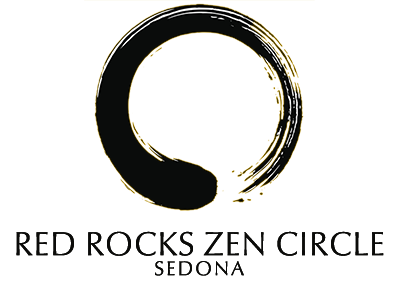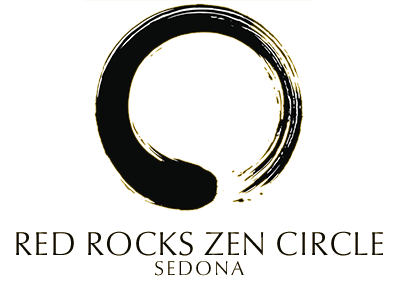Dharma Talk by Deirdre Eisho Peterson
November 2012
Good evening, everyone. Thanksgiving is almost here. It’s an important time when we reflect and give thanks for what we have in our lives.
What I want to talk about this evening is actually the other side of that. It’s an inner state that we all experience and that creates considerable suffering. That state is known as the Hungry Ghost, and it is something we will all encounter when we are willing to look deeply inside ourselves in our Zen practice.
In the Zen literature, Hungry Ghosts are often described quite visually. They are said to have necks as thin as needles, so very little food can pass through, and they have great distended bellies, so they are ravenous. They are described as being in continual torment because they have this great hunger that can not be satisfied.
So what are these Hungry Ghosts?
When I came into Zen practice I would hear reference to these Hungry Ghosts, which seemed like part of an exotic Buddhist cosmology, and I didn’t relate to them. But I’ve come to understand Hungry Ghosts quite differently. The Hungry Ghost – or the state of being that it represents – is something found inside us. The type of Hungry Ghost may be different for each of us, but the energy behind the hunger is the same. There is something we crave, something we feel that we desperately need to be happy. We’re always wanting something – it’s our fundamental illness. This could take the form of the craving of addiction. It could be the greed for money or possessions – there are people who have plenty of wealth but who are obsessed with not having enough, with needing more. It could be a relentless craving for fame, for recognition, or even for whatever our concept of enlightenment is. These Hungry Ghosts can roam inside of us, sometimes more dormant, sometimes more active.
The Hungry Ghost is not always about acute craving. It can also manifest as a generalized dissatisfaction or restlessness, that whatever we have is not enough: we wish we were somewhere else, being someone else, doing something else. For the Buddha, the recognition of the suffering that comes from our desires, our dissatisfactions, was the foundation for his teaching. In the First Noble Truth he tells us that there is Dukka: suffering, dissatisfaction. In the Second Noble Truth he tell us that this has a cause, which is our craving, our desires. He goes on to tell us that there is an end to suffering through following the Eight-fold Path.
From the standpoint of Zen, the important thing is seeing the dynamic of the Hungry Ghost inside of us. Part of our practice, part of the clear seeing that we cultivate in zazen, is to become familiar with our Hungry Ghosts. Because when we do, the Hungry Ghosts lose some of their power. We’re not pushed around in a trance anymore, unconscious of what is happening. It’s an important moment in practice when we first recognize the Hungry Ghosts. We can be practicing for a while before we really start to see this because we easily become lost in the compelling allure of what it is that we seem to want. We see the object of our desires, and we fixate on that, without examining what are the energies driving the desire in the first place.
An image that comes to mind is dog racing. Fortunately that isn’t very popular anymore, but once it was. Grayhounds would chase an artificial rabbit around a race track. Dogs don’t have much capacity for reflection when it comes to rabbits, they just take off. We can have ‘dog mind’ too. Our drive to go after things is very powerful. Chasing things without looking at what is driving us to chase, or whether the object of the chase is what will really satisfy us.
That’s why our zazen practice is so important. It’s when we stop the chase, stop the search. It’s when, as Master Dogen would say, that we take the backward step and turn the light inward, illuminating the Self.
The Zen teacher Joko Beck had an insightful perspective on the Hungry Ghost and how it drives us to search for “more.” She says this: “What we search for may be different from person to person, but what we’re all really looking for is an ideal life. Something seems to be missing, and we’re looking for the missing part. If we stop searching, what are we left with? Underneath all that searching there is distress, there is unease. So instead of continuing to search, we start to see that Zen practice is to be with that which motivates the search, which is this unease and distress. This is the turning moment.”
To be with that which motivates the search. This is not always easy to do, especially if we’ve spent a lot of our life avoiding the unease. Whenever we are running away from part of our experience, we’re not present for what is actually here now. We’re partially disconnected from our experience. That is the essence of a ghost – that our bodies are here, but we’re not connected with what is happening.
It’s interesting to see the ways the wanting mind can manifest even when we are at sesshin, on retreat. It can become quite vivid. You can be on one retreat, dreaming of the next one when things are going to be so much better. As the poet Basho wrote, “Even in Kyoto, I long for Kyoto.” You can be sitting zazen on the retreat and really want kinhin to come, and once kinhin comes you wish you were sitting again. And on retreat we just see that, we see how it is, hopefully with a bit of humor and compassion, and a kind of wisdom can develop about how the mind is.
Once we get to the point of what Joko Beck called the turning moment, when we start looking inside ourselves instead of chasing around outside, there can be a kind of relief. We’re looking at what is actually present and calling it by its name. The Buddhist teacher Jack Kornfield says: “Whether our inner experiences are difficult or pleasant, the naming of them is the first step in bringing them to a wakeful conscious attention. The key is to observe wanting and grasping without condemning it and without being caught up in it. We are developing a wise relationship with the wanting mind.”
So … not condemning or rejecting what we see. When we first start to see our Hungry Ghosts, we want to get rid of them. But trying to get rid of our desires, our craving, is just setting up a battleground. And getting rid of things is not our practice in Zen. Our practice is the clear seeing and awareness, the acceptance of what is here, as it is. That’s a dramatic change, right there, from our usual way.
The Tibetan teacher Pema Chodron says that “through meditation we come to realize that any wisdom that exists can exist only in what we already have. It doesn’t do any good to try to get rid of our so-called negative aspects. We can lead our life to become more awake to who we are and what we’re doing rather than trying to improve or change or get rid of who we are.”
And Pema Chodron always reminds us of the importance of developing kindness and compassion for our own experience. What we sometimes don’t clearly see is that the wanting mind is a suffering mind. There’s a lot of contraction there.That’s why we want to develop a view that includes compassion for our own suffering, which is both unique to ourselves and no different than the suffering of the world. We try to learn to relate compassionately to wherever we find ourselves.
I don’t know much about Tibetan Buddhism, but you’ve no doubt seen the mandalas – those precise, intricate paintings on the nature of existence. The realm of the Hungry Ghosts is presented as one of the six realms that we may experience. The realm of wanting. What’s important to note in these paintings is that in the Hungry Ghost realm, as in each of the six realms, there is always some type of Buddha or dharma image. Even when we’re caught up in wanting or craving – these conditions are also the ground for our awakening, for us to wake up. Every situation can be workable, can be the ground of practice. There’s an expression that when the clay, or the mud, is deep, the Buddha is big. It is how we transform suffering into wisdom. So the wanting mind can be a powerful ground for us to take the backward step, to look deeply at what is happening.
So I’ve been talking about the importance of zazen in working skillfully with our Hungry Ghosts. In the radical simplicity of sitting and observing the mind, things come into focus a little more sharply. We start to settle down, to ground ourselves, to let the seeking mind come to rest. We develop the ability, a little at a time, to just be. Be ourselves, be with our experience. Zazen gradually reveals our true nature, our Buddha nature, where nothing is missing or lacking. We feel less isolated, and experience a deeper connection with ourselves and with others. Our heart starts to open more.
And when we feel some sense of connection, we can start to experience gratitude. There is nothing more healing for the Hungry Ghosts than the feeling, the natural upwelling, of gratitude. Instead of feeling impoverished and that what we have is not enough, we come to appreciate what we do have. This is transformative. Our life may be filled with many difficulties. But we can still experience deep feelings of gratitude. Those of you who have come to our zazenkais, our full day retreats, know that at the end it is not uncommon for many people to share their feelings of gratitude, simply for the day that we have shared. This is one of the fruits of Zen practice, and it is something that nourishes and calms the Hungry Ghosts.
In our midday meal at the zazenkai, we each make an offering of some part of our meal – usually some grains of rice. We chant together that we offer this to the Hungry Ghosts, to satisfy them. We chant that this food will pervade everywhere. We offer this to all the Hungry Ghosts in ourselves, in the zendo and in the world, past-present-and-future. Together, in community, we experience acceptance and healing.

